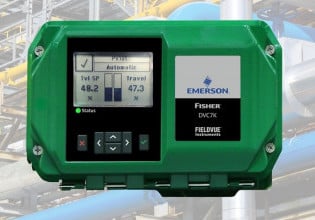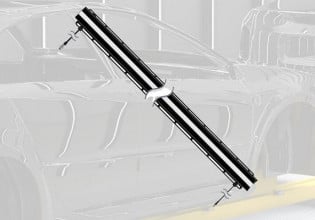Hyundai Robotics Focuses on Research and Development of Advancing Construction Robots
Hyundai Robotics partners with Hyundai Engineering and Construction to create autonomous solutions in material transport and other autonomous work in the construction industry.
Hyundai Starts R&D on Construction Roots
Hyundai Robotics partners with Hyundai Engineering and Construction to build autonomous solutions in material transport and other autonomous work in the construction industry.
Hyundai Robotics will partner with Hyundai Engineering & Construction (E&C) to build robots that will navigate machinery on construction sites and perform monotonous tasks like bricklaying, drilling, painting, and other jobs.
The new partnership follows the robotics trends expected to grow most rapidly in construction after manufacturing and production.

From left: Gu-yong Park, managing director of Hyundai E&C, and Dae-Gyu Yoon, the managing director of Hyundai Robotics. Image courtesy of Hyundai.
Hyundai E&C is owned by Hyundai Motor Group, while Hyundai Robotics is an independent subsidiary of Hyundai Heavy Industries. The two companies are from the same parent Hyundai Motor Group, which first split in the 1980s.
Currently, robotics are most heavily employed in surveying and inspection applications. A report by Frost & Sullivan says that robots are currently most highly used as survey drones and other flying autonomous vehicles, according to a news report.
Flying robots can be equipped with vision systems and imaging software to collect data, and are pre-programmed or remote controlled to fly around construction sites. These unmanned aerial vehicles (UAVs) can collect data for applications like building inspection modeling by engineers and drafters.
The Shift to More Autonomy in Construction
Frost & Sullivan reports high implementation costs as the main obstacle slowing down the adoption of robotics and autonomous solutions in construction. There are many efforts underway to lower these costs and economic risks associated with these new technologies.
For example, many construction equipment manufacturers, including “Komatsu, CAT, Volvo CE, and others, are investing heavily in research and development to perfect the technology and bring it to market,” says a website reporting on a recent study by Midwest Economic Policy Institute (MEPI).
With current R&D efforts, companies and construction workers may likely come to value robots on their construction sites and see more cost value in their deployment. When this happens, there will be a more significant shift toward robotics in construction.

Hyundai forklift. Image courtesy of Hyundai Heavy Industries.
In addition to human work in construction, robots are lending a helping hand. Japanese contractor called Obayashi Corp. currently uses robots to lay sediment and complete a dam. The contactor hopes that robots will be useful in more of its future dam-building projects to be better equipped to deal with a labor shortage and an aging workforce in Japan.
Industry 4.0 Data Serves Future Robotic Apps
The CEO of Hyundai Robotics confirms that it will use data cultivated by its robots used in manufacturing over the past several decades to develop its construction bots. Overall recent developments in robotics include proprioception, or the ability to balance, and improved vision systems.
Hyundai Robotics will likely build robots that will serve as models to enable more “smart” operations in construction. And all the while, they will gather more data for machine learning and diagnostics monitoring in the construction industry.
The robots developed by Hyundai Robotics aim to perform well in applications like painting, drilling holes, laying down building materials, and carrying things via smart cars on construction sites. Hyundai E&C and Hyundai Robotics are also jointly developing Autonomous Driving Integrated Software for robots to maneuver construction sites.






